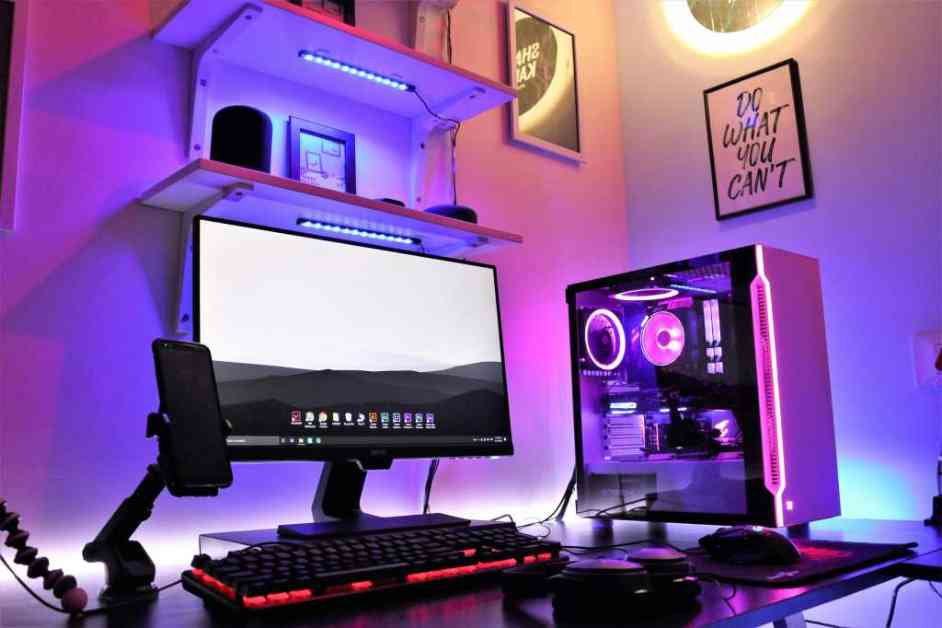Every gamer has been there: eagerly unboxing a new gaming monitor, only to be met with lackluster performance. Faded colors, blurring, screen tearing—these are all telltale signs that your monitor isn’t up to par. It’s understandable if you went for a budget-friendly option, but when you’ve invested in top-of-the-line visuals, subpar performance is disappointing.
As seasoned reviewers, we guide you to the best gaming monitors and steer you clear of the ones to avoid. However, one burning question remains: why do some high-end monitors with impressive specs fall short on performance?
The Deceptive Nature of Monitor Specs
The crux of the issue lies in the often inaccurate or misleading claims made by manufacturers regarding the performance specs of their monitors. While not all manufacturers or products fall under this umbrella, there are numerous instances where the disparity is glaringly evident.
Two primary offenders in this realm are HDR and contrast ratio. HDR, available under various names like “Nebula HDR” and “Quantum HDR,” is frequently used by manufacturers to market their displays as having high peak brightness and contrast ratios. However, these labels are often fictitious and intended to piggyback off the established VESA HDR certification standard.
The Peak Brightness Predicament
Peak brightness, a critical aspect of HDR, can be grossly mischaracterized in product specs. While some monitors may indeed reach the advertised 1,000 nits peak brightness, others fall short or only achieve this brightness in a small portion of the screen. VESA certification can also be perplexing, as two monitors with the same certification might differ significantly in dimming zones, impacting overall image quality.
For authentic HDR performance, look for monitors with high peak brightness and numerous dimming zones. This ensures a more consistent and vibrant display across the screen.
Deciphering DisplayPort 1.4
Another area of concern is the misrepresentation of DisplayPort specifications in gaming monitors. The discrepancy between what is advertised and what a monitor can actually deliver, such as HDR input support at lower bandwidths, can lead to consumer confusion. Genuine DisplayPort 1.4 can accommodate higher resolutions and refresh rates, so buyers should remain vigilant when assessing these specifications.
The Truth Behind Contrast Ratios
Contrast ratios, often touted in product sheets, can also vary significantly from actual performance. Manufacturers’ claims should be carefully scrutinized against reviewers’ assessments to avoid falling victim to inflated numbers.
The Double-Edged Sword of Response Time
Response time is a critical factor in a gaming monitor’s performance, yet not all specifications provided by manufacturers paint the full picture. While most consumers are familiar with the gray-to-gray response time (GtG), which measures pixel transition speed, another essential metric, Moving Picture Response Time (MPRT), is often overlooked. MPRT, representing how long a pixel remains visible on the screen, offers a more comprehensive understanding of motion blur in fast-paced games.
It’s crucial to delve deeper into a monitor’s specs and consider both GtG and MPRT measurements to ensure a seamless gaming experience. By conducting thorough research and reading expert reviews, you can steer clear of common pitfalls and make an informed purchase decision.
In a world where gaming visuals reign supreme, the devil is in the details. Take the time to explore your monitor’s specifications thoroughly, and equip yourself with the knowledge needed to elevate your gaming experience to new heights. After all, a well-informed gamer is a step ahead of the competition.
Dominic Bayley, a dedicated tech enthusiast based in Australia, specializes in PC gaming hardware at PCWorld. His expertise lies in laptops, mice, headsets, and keyboards to enhance the gaming experience.











